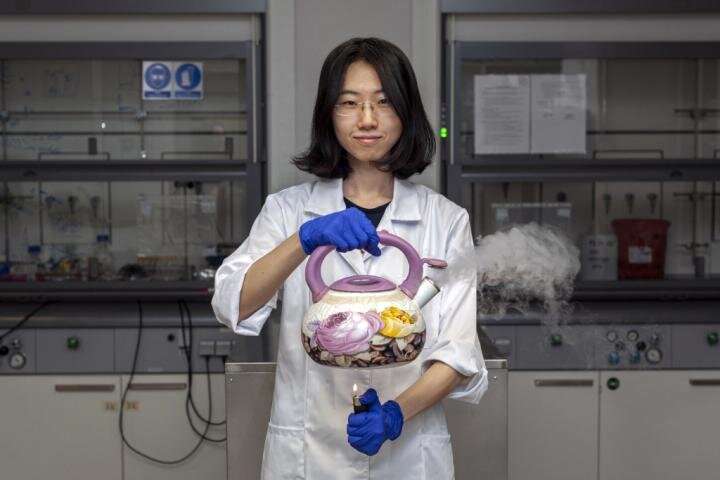Often and little—or rarely and to the maximum?

If we were talking about food, most experts would choose the former, but in the case of energy storage the opposite is true. It turns out that more energy can be stored by charging less often, but right up to 100%.
At least, this is the conclusion arrived at from research carried out by a team of scientists at the IPC PAS. Although the studies involved idealized two-dimensional lattice systems, at the end of the day, a principle is a principle. Dr. Anna Maciocek, one of the authors of the work published in Physical Review E, describes it as follows. "We wanted to examine how the manner in which energy is stored in a system changes when we pump energy in the form of heat into it, in other words—when we heat it locally." It is known that in systems heat spreads out and diffuses. But is the collection of energy influenced by the way it is delivered; technically speaking, 'the delivery alignment'? Does it matter whether we provide a lot of energy over a short period of time; none for a long time and then again a lot of energy; or small portions of energy one after the other, almost without any breaks?
Cyclic energy supply is very common in nature. We provide ourselves with energy in just this manner by eating. The same number of calories can be provided in one or two large portions eaten during the day, or broken down into 5-7 smaller meals with shorter breaks between them. Scientists are still arguing about which regimen is better for the body. However, when it comes to two-dimensional lattice systems, it is already known that in terms of storage efficiency the "less often and a lot" method wins.
"We noticed that the amount of energy the system can store varies depending on the portion size of the energy and the frequency of its provision. The greatest amount is when the energy portions are large, but the time intervals in between their supply are also long," explains Yirui Zhang, a Ph.D. student at the IPC PAS. "Interestingly, it turns out that if we divide this sort of storage system internally into compartments or indeed chambers, the amount of energy that can be stored in such a divided-up 'battery'—if it were possible to construct—increases. In other words, three small batteries can store more energy than one large one," says the researcher. All this holds, assuming that the total amount of energy put into the system remains the same, and only the method of its delivery changes.
Although the research carried out by the IPC PAS team is quite basic and simply shows the fundamental principle governing energy storage in magnets, its potential applications cannot be overestimated. Let's imagine, for example, the possibility of charging an electric car battery not in a few hours, but in just under twenty minutes, or a significant increase in the capacity of such batteries without changing their volume, i.e. extending the range of the car after one charge. The new discovery may also, in the future, change the methods of charging different types of batteries by determining the optimal periodicity of supplying energy to them.
More information: Y. Zhang et al, Energy storage in steady states under cyclic local energy input, Physical Review E (2020). DOI: 10.1103/PhysRevE.101.012127
Journal information: Physical Review E
Provided by Polish Academy of Sciences





















